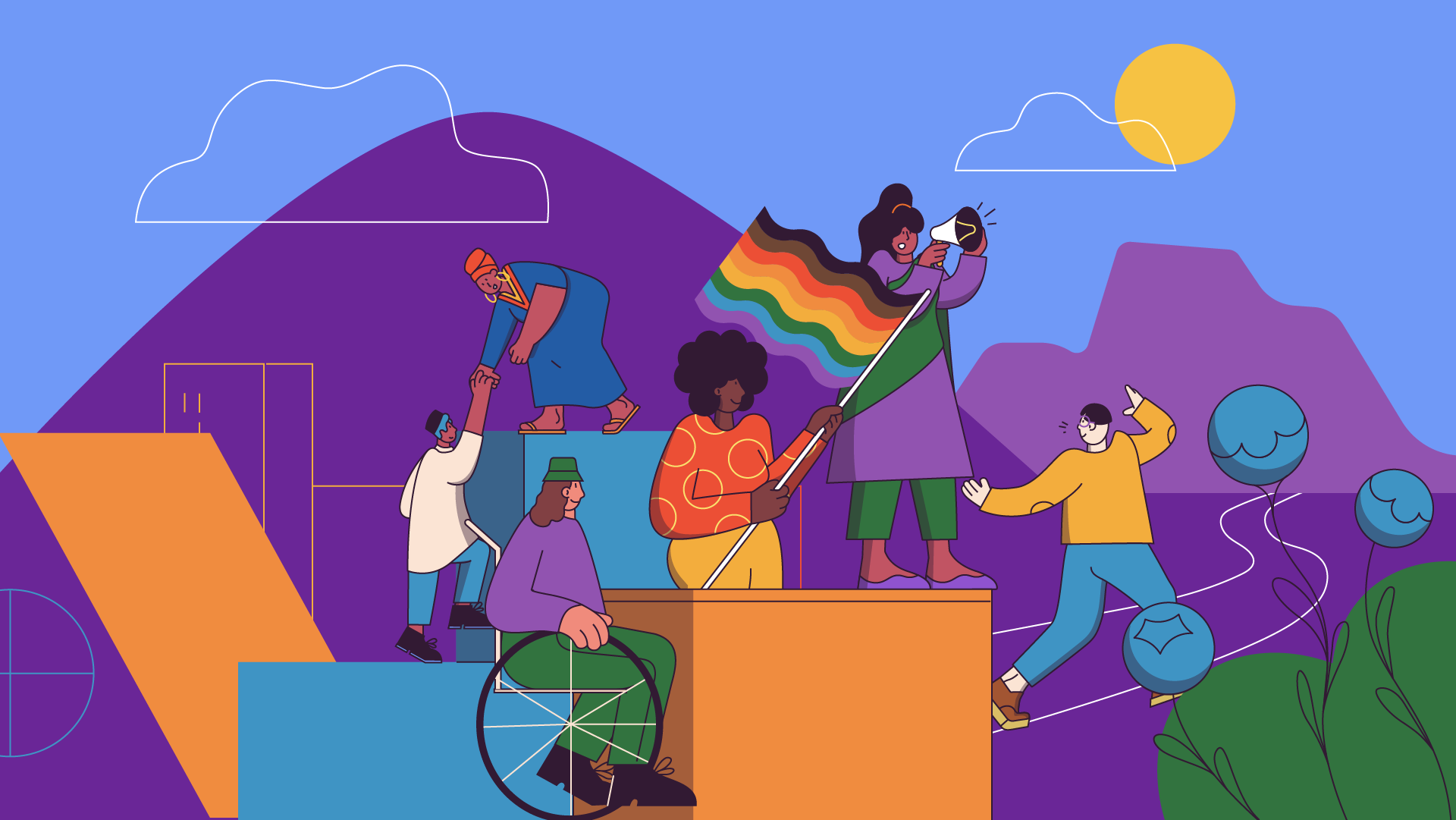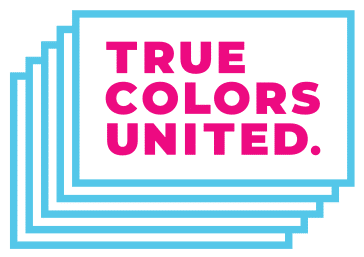
It’s the first-ever global campaign on LGBTIQ+ youth homelessness.
Lesbian, gay, bisexual, transgender, intersex, queer, and questioning (LGBTIQ+) youth exist everywhere – in every country, city, and community on our planet. To end LGBTIQ+ youth homelessness, we need to build a united worldwide movement – one built on new ideas and youth expertise. True Colors United and the United Nations Human Rights Office are teaming up to create the first-ever global campaign on LGBTIQ+ youth homelessness. It all launches Monday, December 14.
Until then, we spoke with Gregory Lewis, Executive Director & CEO of True Colors United, and Veronica Birga, Chief of the Women’s Rights and Gender Section at the UN Human Rights Office, for their take on why this campaign is so important, and what folks can expect over the next year.
Why did you decide to join forces on a campaign to end LGBTIQ+ youth homelessness?
Gregory: The United Nations Human Rights Office and True Colors United are united in our belief that every LGBTIQ+ young person deserves a safe place to call home. LGBTIQ+ youth have a higher risk of homelessness than their non-LGBTQ peers. Homelessness is a global issue. Across the world, LGBTIQ+ youth are experiencing homelessness in many forms – be it living on the street, couch-surfing, or a variety of unsafe conditions. While we’ve made some progress in parts of the world to address this issue, our work is far from over. The first challenge to ending the problem is making people aware of the fact that the problem even exists. It’s a hidden issue that needs to be brought to forefront and spoken about in a way people can understand. That’s the goal of this partnership.
Veronica: Research confirms that homelessness disproportionately impacts LGBTIQ+ youth all over the world. This is a global issue that can no longer be overlooked. In North America up to 40% of youth experiencing homelessness identify as lesbian, gay, bi, transgender or queer. Meanwhile, data from the European Union suggests that 24% of trans youth and as much as 41% of intersex youth have experienced homelessness. This trend is confirmed by research from Australia, Nepal and West Africa. Through this partnership we hope to start conversations that will help the public as well as governments better understand the problem and what they can do to help.
Why are LGBTIQ+ youth so vulnerable to experiencing homelessness?
Gregory: The most cited and discussed reason LGBTIQ+ youth experience homelessness is family rejection. Unfortunately, discrimination is very real – and many young people don’t receive the acceptance and support they need from their families. But that’s not the only reason. LGBTIQ+ youth also face discrimination from their peers, their communities, and from governments and economic systems that push them to the margins. All these factors contribute to their homelessness and continue their homelessness by failing to give them what they need.
Veronica: LGBTIQ+ youth experience higher rates of homelessness with serious impacts: violence, incarceration, negative health outcomes, and other traumatic experiences. This creates a vicious cycle, with LGBTIQ+ youth experiencing longer periods of homelessness That’s why we need to make sure that young people with lived experience of homelessness are involved in developing the solutions – so that they are focused on their actual needs. They’re the experts, after all.
Are there sub-groups among LGBTIQ+ youth that are extra vulnerable?
Gregory: When you have intersecting identities that further your marginalization, your risk of homelessness goes up and increases your barriers to ending homelessness. We know that in North America, Black, Brown, and Indigenous LGBTQ+ youth are at the highest risk of homelessness. But it goes beyond race, sexual orientation, and gender identity.
Veronica: Exactly! There are many factors that increase the risk of facing violence and discrimination. Youth with different abilities, pregnant and parenting youth, ethnic minorities, young migrants, and youth with pressing medical needs are all highly impacted by homelessness and face additional barriers to exiting homelessness. That’s why solutions to youth homelessness need to be rooted in inclusion and equality. If our communities, governments, and societies can meet the needs of our most impacted people, we can meet the needs of all young people.
What can we do to end this?
Veronica: Having a safe and stable home is a human right. Governments have a duty to take urgent action. Focus should not be on how young people experiencing homelessness can be “saved”, but rather on how we can create communities and societies where everyone is welcome and can live in dignity– LGBTIQ+ young people included. Young people experiencing homelessness are more than capable of saving themselves, but they’re fighting overwhelming structural barriers linked to discrimination and exclusion. Governments should focus on prevention and early intervention by providing services that reduce those structural barriers and support young people on their journey forward.
Gregory: We believe that all young people deserve a safe place to call home. We’re just at the beginning of that becoming a reality. The first step is naming and knowing the problem. This campaign is about starting a conversation that’s been needed for far too long about LGBTIQ+ and other highly impacted youth. We hope it serves as a starting point for people and organizations across the world to share different ideas, experiences, and perspectives in order to put new solutions into motion. We hope that people will be moved and commit to joining us in our work to end homelessness among LGBTIQ+ young people everywhere.
Tell us more about the campaign you’re launching!
Gregory: We’re so excited! Together True Colors United and the UN Human Rights Office are launching the first-ever global campaign on LGBTQ+ youth homelessness. We’re committed to raising the profile of this issue significantly over the next year: starting with the launch of a brand new video PSA, narrated by our co-founder Cyndi Lauper. The PSA will premiere on December 11 at Cyndi Lauper & Friends: Home for the Holidays. Our annual benefit concert is fully virtual this year – streaming live on Tiktok on 12/11 at 7pm ET and Facebook and Youtube on 12/13 at 7pm ET.
Veronica: And that’s just the beginning! We’ll be putting out new content consistently over the next year, beginning with the full launch of our joint campaign on 12/14. Stay tuned!
